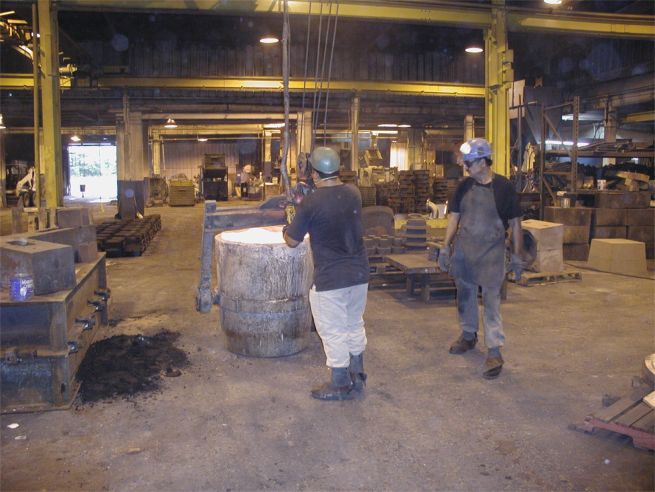
Winnebago Foundry Tour
I first learned of Winnebago Foundry a few weeks ago when Tim Williams mentioned it on the r.c.m. group. I emailed Tim for some more information and called the foundry to make an appointment. I was headed to Wisconsin for the EAA Air show and Convention and a detour to South Beloit Illinois didn't seem too far out of the way. Thanks Tim!

I arrived at the foundry just as they were preparing to pour one of the largest size casting that they can handle. The part is for the great water project that New York City is conducting to bring water to the city from upstate NY. You might have seen the project portrayed in one of the Bruce Willis Die Hard shoot-em-ups. The ladle is filled with molten metal at about 2800 degrees.
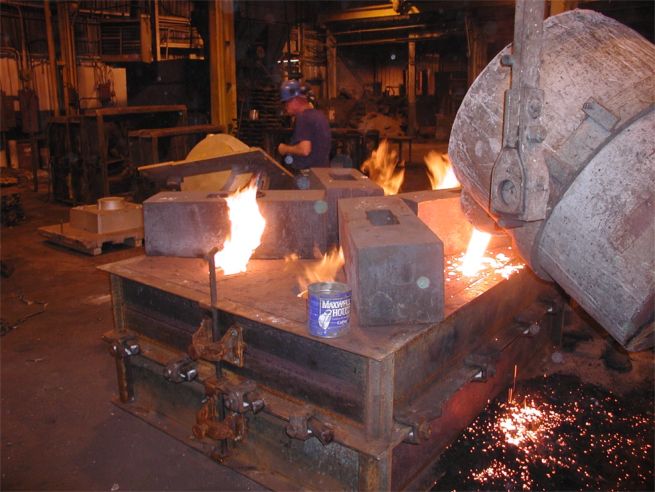
Here the part is being poured. The flare from the vents is due to the tremendous head burning off compounds in the mold material. In these large parts a phenolic-ester (p-e) binder system is used to minimize the out gassing in the molding process. The large weights on top of the mold are to prevent the top of the mold from floating up when the metal is poured. I had never thought of molten metal as having flotation capability but you learn something new every day!
The coffee can contains a compound that is sprinkled into the vents to insulate the material so as to keep is molten longer so as to feed the casting longer.
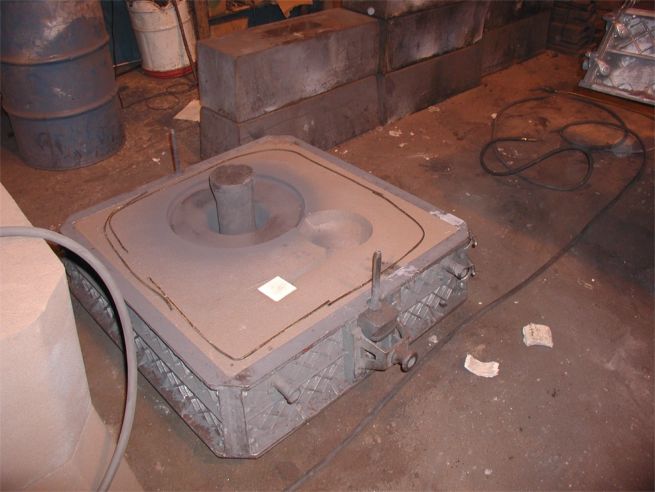
Here we see another mold ready to be closed. The material is the same p-e material used in the previous mold.
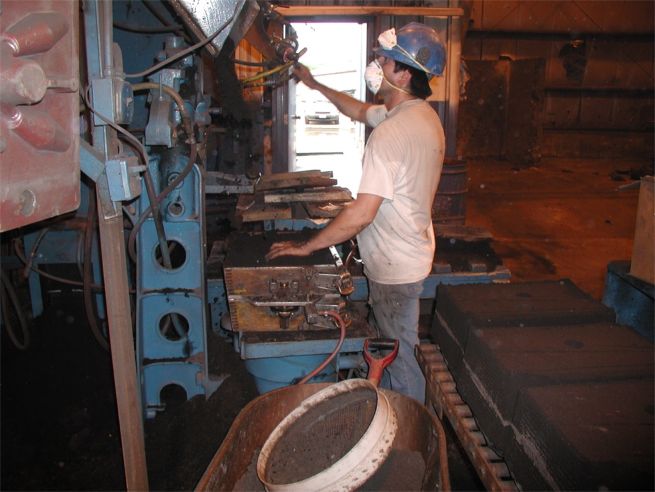
A foundry worker fills the mold with green sand from an overhead bin. First, using the screen in the foreground, he sprinkles a thin layer of extra fine sand onto the pattern. This helps give a better finish to the finished part. Sort of like using gel coat in fiberglass molding. He then uses a T shaped tool to pack the corners of the flask and then uses a pneumatic press device to pack the whole flask. These operations are not shown as the worker was faster with his work than I was with my camera. The operator will make about 125 of these molds per shift.
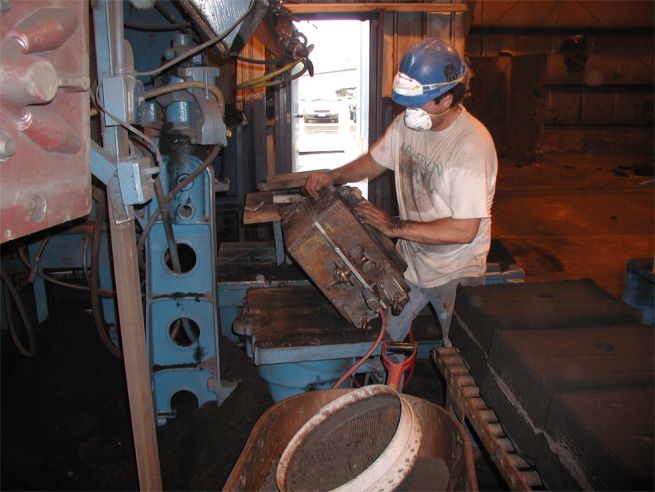
The flask is then flipped over and the operation repeated on the other side. These molds use a double sided mold board so that the male and female sides of the part are created in the sand.
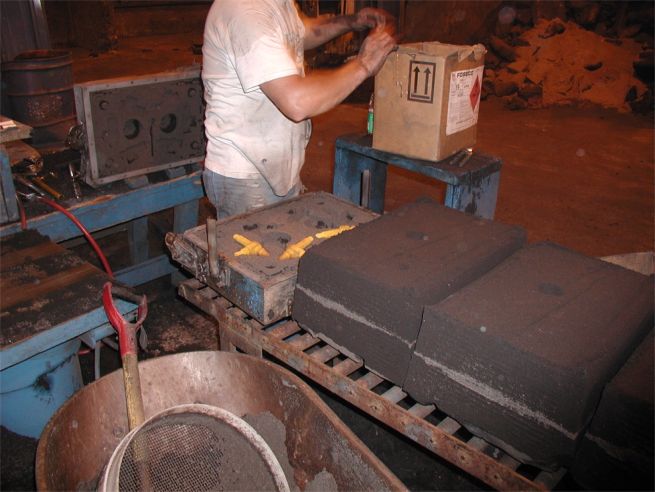
Here he is placing cores in the mold. The cores are made in another area of the plant with the p-e compound in an injection molding type of operation.
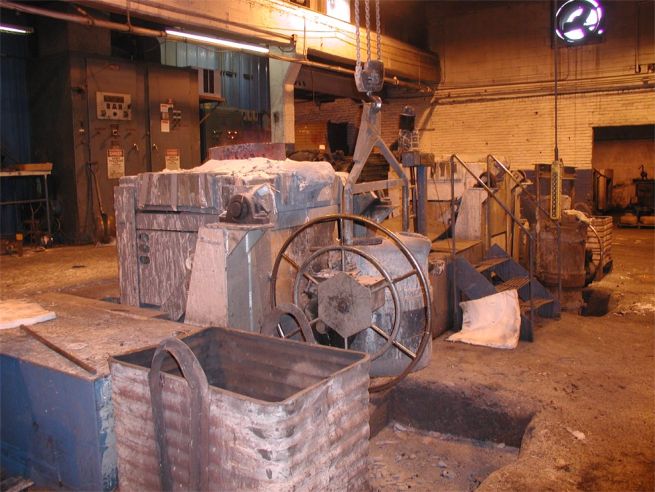
These are the electric induction furnaces capable of heating 3000 pounds of metal to about 2800 degrees in less than an hour. The molten steel is analyzed for chemical makeup and trace elements are added as necessary. Winnebago Foundry certifies its casting for composition and quality.
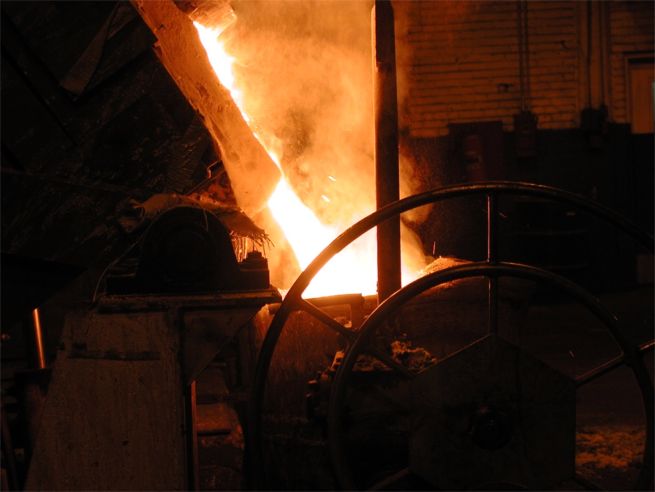
The furnace raises up and tips to fill the ladle.
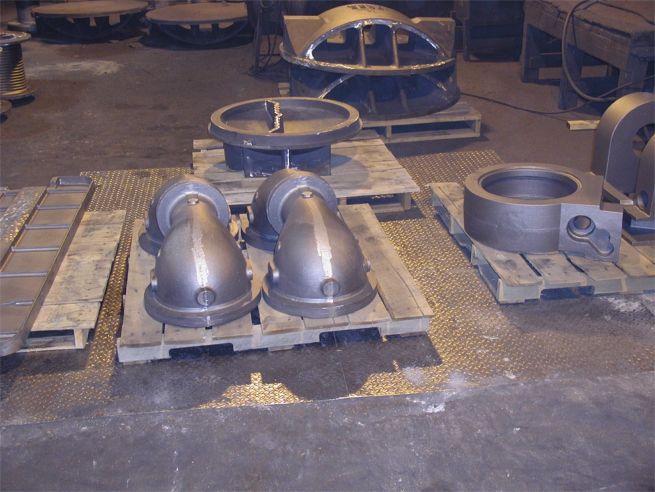
These are parts that have had their sprues cut off with a plasma torch and have been snag ground to clean up any flash and rough edges.
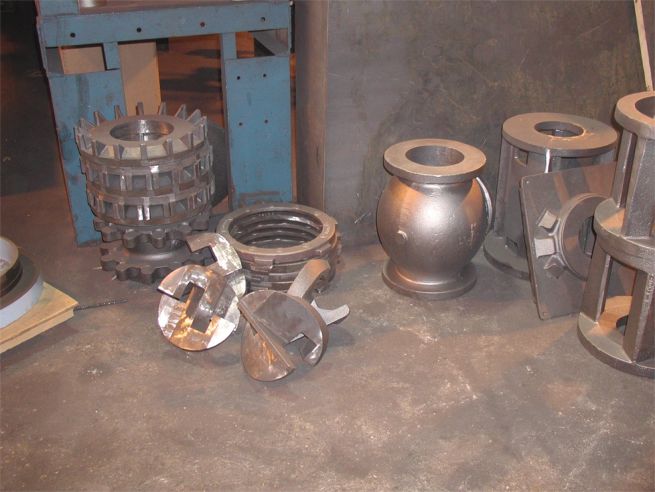
More finished parts waiting to be shipped.
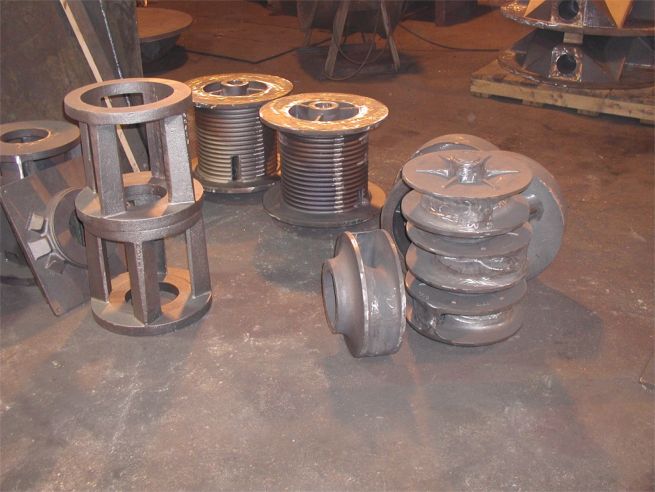
From right to left are impellers of some sort, two winch cable spools and some other parts that Mike Malone my tour guide and shop superintendent didn't know what they were. He said they didn't have to know what the parts did, they just had to make them to the specification!
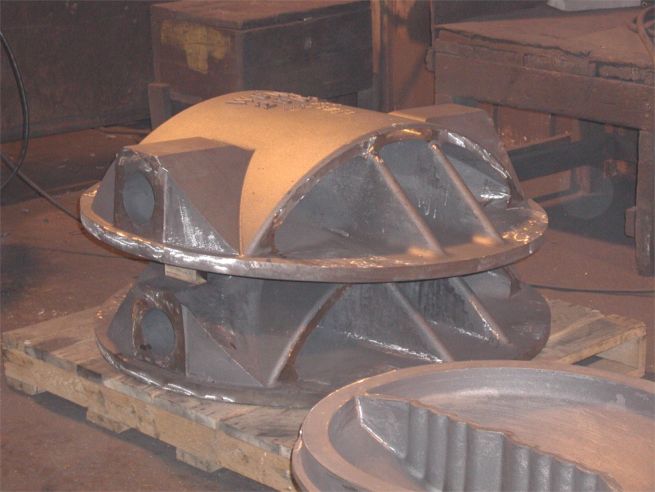
These are two of the parts being cast in the second picture from the top.